Ten Years of Kyoto Animation: Missed Tricks and Lasting Hits

Kyoto Animation (hereby referred to as KyoAni) was established in 1981 by married couple Yoko and Hideaki Hatta, who still hold important roles in the company today. Hideaki has taken on the role of planning producer for all the major titles by the studio and Yoko has done the same with added animation work with shows like Doraemon, Crayon Shin Chan, and the Urusei Yatsura OVA series. The company started off providing animation for other well-established animation companies such as Sunrise, GONZO and Studio Ghibli (Cavallaro, 2012). The extensive list of these initial projects add to over a hundred, but some notable ones include Akira, Cowboy Bebop, Fushigi Yugi, Inuyasha and Kiddy Grade.
It’s first project as an independent studio came with the 2003 fantasy OVA of Munto, licensed by Central Park media. The company made a very good first impression in their debut of Full Metal Panic Fumoffu in August 2003 and currently produce around two shows a year depending on the length of the series. 17 of their 21 television series have been licensed for Western release. KyoAni has a head office, store and two studios in Kyoto, and two offices in Tokyo.
Nearly every KyoAni show has been a “hit” and are often recommended by anime fans as stand out titles for their genre, although how much of this popularity is due to quality or hype over a gimmick? Have some series fallen off the radar as time has gone on and are any appropriate to recommend to an audience less familiar with anime?
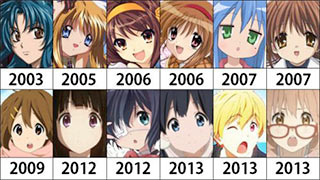 For the purpose of this article instead of rating the shows in a list, I have divided them by form of adaption. From here, I will examine the merits of the source material and the quality of the adaption itself. All of the series will be mentioned due to the large volume of popular series. The goal is to use the context of the form of adaption to analyse and review how these titles stand up today in 2016 compared to when they were released. Taking all of this into account, is Kyoto Animation a studio that merits any attention from non anime fans?
For the purpose of this article instead of rating the shows in a list, I have divided them by form of adaption. From here, I will examine the merits of the source material and the quality of the adaption itself. All of the series will be mentioned due to the large volume of popular series. The goal is to use the context of the form of adaption to analyse and review how these titles stand up today in 2016 compared to when they were released. Taking all of this into account, is Kyoto Animation a studio that merits any attention from non anime fans?
Since the company’s animation production is of extremely high quality across all of their works, this will not be the main focus of review. Instead each product will be differentiated from the other via themes, soundtrack, plot and characters.
Kyoto Animation’s Approach to their Work
One not familiar with anime may wonder why it is important to focus on KyoAni since there are many other high profile animation studios in Japan like BONES, Sunrise or Production I.G to name a few. It’s quality of animation, one that can exceed some movies at its best, has received world wide acclaim. Highlights include impeccably consistent character design work, fluid movement, detailed backgrounds and attention to detail in background movement and body language.
KyoAni deliberately uses its character animation to bring mundane experiences to life (Cavallaro, 2012). This is shown in nearly every single KyoAni title post their beginnings with Full Metal Panic and Munto, even when a fantasy, magical element is present. The setting is often the modern world with characters that are enticed by occult and bizarre happenings.
The focus on making the ordinary interesting is demonstrated perfectly in this short 50 second clip from Hyouka (2012). Even though the exchange is simplistic, the intrigue of these characters meeting is accentuated by the careful use of sound effects, lighting (which subtly changes as Oreki walks), the gentle fluttering of the curtains in the background and the individual streams of hair that flutter as the characters meet eyes.
The vast stylistic differences between KyoAni and most other studios stem from deviations in the company’s core goals and values. Mastery of the craft comes first, with financial goals not being as emphasized as much. KyoAni’s perfectionist-like goal for quality over quantity includes time to reflect on past work and learn from mistakes. It does this using brainstorming and collaboration. In contrast, Sunrise has eleven different studios and in 2010 created fifteen titles, two were television shows. Many anime studios tend to create a similar number of series a year, but there is not the same attention to detail and care in their work.
To get an idea of how this focus differs, in their job description for animator, KyoAni describes that successful applicants must not only be able to move a character through their drawing skill, but be able to play and experiment with the character itself so the expression of movement is genuine and entertaining, in a similar way to theater. They don’t only care about their reputation and end product for the sake of Japan though. On their official website KyoAni acknowledges that since anime has become popular throughout the world, that they endeavor to entertain the widest audience possible.
Besides animation production, KyoAni also prides itself on further developing and researching digital animation. They use the program RETAS (Revolutionary Engineering Total Animation System) Paintman, which is the leading software for animation in Japan and is not available in other parts of the world. This is the equivalent of Pixar stating that they’ve had to improve the software and animation techniques with each subsequent work. The company holds animation courses for aspiring students and gets the fans involved with competitions by displaying their passion and love for the craft.
KyoAni is worthy of attention from both anime and non anime fans from this difference in approach alone.
Incomplete Light Novel Adaption: Full Metal Panic Fumoffu & The Second Raid
The majority of KyoAni’s work, and some of the most successful titles, are adaptions of light novels. The first of these was Full metal Panic Fumoffu in 2003 and The Second Raid in 2005. It was fortunate KyoAni chose an already existing franchise to build upon as the reception to the sequels was incredibly positive.
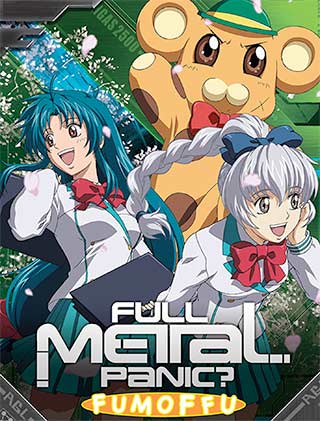 The Full Metal Panic television series is based off a series of light novels by Shoji Gatou. It tells the story of an organisation called Mithril who send a soldier to guard high school student, Kaname Chidori, as she is a person of interest in a number of civil conflicts. The original GONZO series from 2002 covered the first part of material, and even though it has a number of fillers and pacing issues, it is still looked back on today as an entertaining series by a number of critics for its interesting story, memorable soundtrack and lovable characters.
The Full Metal Panic television series is based off a series of light novels by Shoji Gatou. It tells the story of an organisation called Mithril who send a soldier to guard high school student, Kaname Chidori, as she is a person of interest in a number of civil conflicts. The original GONZO series from 2002 covered the first part of material, and even though it has a number of fillers and pacing issues, it is still looked back on today as an entertaining series by a number of critics for its interesting story, memorable soundtrack and lovable characters.
KyoAni adapted materials in Volumes IV and V for their adaption, splitting the comedic and dramatic aspects into two separate series. To date Full Metal Panic is the only science fiction work KyoAni have done and it remains some of their best, with fans and critics alike holding the series in as high esteem as they did once the series first premiered. The adaptions are some of the studios finest with concise writing, plenty of intense mecha action scenes and romance. Fumoffu is the an episodic comedy spin off and is considered one of the best anime comedies of the decade. The Second Raid had more dramatic aspects and has story with little to no filler. There are seven light novels in the series remaining. After a 10 year gap, Season four was finally announced in October 2015 so it is possible that KyoAni could complete it.
How does Full Metal Panic differ from KyoAni’s other work? The orchestrated soundtrack by Toshihiko Sahashi is memorable and powerful, possibly because a lot of the original staff had crossed over onto this project from the GONZO installment. In both Fumoffu and The Second Raid, the main characters grow subtly as the series progresses, and most of all, because of the smart division between light-hearted and dramatic material, the pacing for The Second Raid is concise. The only section that may not need to be there is the first number of episodes, as the manga starts from the material of DVD two onward without losing any of story. The larger plot, despite leaving questions unanswered, is memorable and compelling.
These works display KyoAni’s potential when they have strong material to use. Full Metal Panic Fumoffu and The Second Raid are very easy to recommend for their charismatic characters, interesting story, emotive soundtrack and a lack of filler. Like most KyoAni shows, it helps that they look better than the majority of anime out today despite being ten years old. Even if series with giant robots isn’t appealing, there are hints of romance, drama and plenty of action, so everyone who is interested in anime ought to give the series a try.
KEY Visual Novel Adaptions: The Source Material
The first doujin games in Japan appeared in the 1980’s, distributed via floppy discs or CDs, only to later make their way to stalls of Comic Market and similar conventions. From the power of many doujin circles sparked the creation of girl games, dating sims and visual novels (Picard, 2013). According to Wikipedia, dating sims have the goal of dating a character, girl games have a sexual element and visual novels merely tell a story. The degree of explicit sexual content can vary with girl games, sometimes dividing into subtypes of eroge or hentai (pornography). These are extremely popular in Japan but for a number of reasons only a few have been released in the West (Miller, 2013). One of these is the Kickstarter funded CLANNAD game which recently got released on Steam.
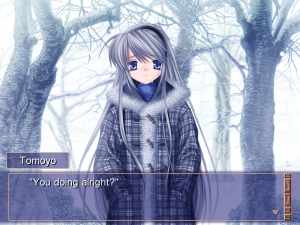
Ever since the existence of visual novels there have been anime adapted from them. Some popular titles are Steins;Gate, Rumbling Hearts, Little Busters and When They Cry (Garcia, 2015). Steins;Gate is arguably the most effective adaption as it does so in such a way that it is nearly impossible to tell it was adapted from a visual novel since the romance aspects are so minor. School Days is infamous in the anime community, some calling it the ‘worst anime ever’, although it displays how a very literal adaption of a dating sim can turn into a disaster.
Japanese dating sims are variations on the basic premise that the player chooses which character he or she wants to date, and taking steps to make it happen. Otome game fanatic Clarita Beaumont lists the synopsis of a popular game, Shall We Date? Niflheim on her blog, paraphrased as, “After one thousand years of sleep, you, the Princess, are woken up by a group of men. You are told that you are the King’s fiancee and upcoming Queen for the throne. Is the King truly the one you are looking for, or is there someone else you have fallen in love with? “. Gameplay includes mini games and uses earned coins to improve the ‘trust’ and ‘intimacy’ level of particular characters. These systems are similar to the romance aspects of role playing games like Dragon Age and Mass Effect. The number of sales is one feature taken into account when making the decision of whether a visual novel should be adapted into an anime.
Simplified variations of the erotic games can be found for free on the internet, with the minimal stories and characterization, with often implausible, laughable excuses for encounters like most Western pornography. One may wonder why anyone would want to even consider adapting these games into anime. As Japan’s entertainment industry feeds off each section and crosses over, the simple answer to make money. The system works remarkably well as an advertisement ploy for both sets of material. KyoAni made three anime based off games from the Osaka company KEY: AIR, Kanon and CLANNAD. CLANNAD was the only one of these appropriate for all audiences with little sexual content. The titles were a guaranteed success in Japan since they were based off the well-selling games and it made sense that after producing Full Metal Panic that KyoAni would play it safe as a budding company and stick to adapting already loved material.
The Kanon game was released in 1999 and had an adult and age-appropriate version. The visual novel follows a boy named Yuuichi who moves back to an old city he used to live in. Many girls he meets recognize him, but he can’t remember anything about them. The series explores his connections to these characters. There are five different characters that have particular story routes. AIR was released in 2000 and involved three main girls (with 2 that need to be unlocked), although the story was divided into three sections, which has a different player character for each section.
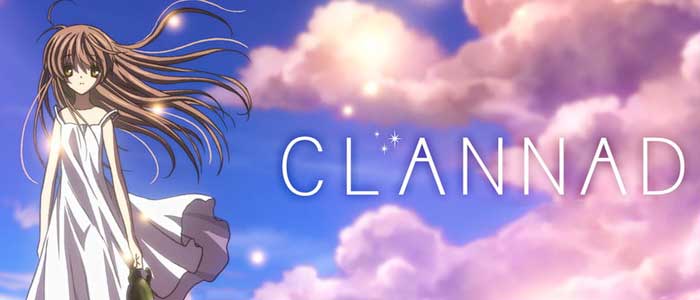
CLANNAD revolves around a depressed student called Tomoya who is encouraged by a girl called Nagisa to join a drama club. In the process of being more involved in school he also helps a number of girls with their problems. In the 2004 game there are five main girls that the player can choose to help and each one corresponds to a different ending. Whenever a story point is completed the player receives a reward in the form of an orb of light. A certain number of these lights allows the player to move onto the next part of the game, and eventually makes the decisive decision on how the story will end. This gameplay element explains a lot of the plot points in the anime and counts for a lot of the criticism. The anime adapts sections of every story route across CLANNAD and After Story.
How were these games adapted into anime, and was this a good idea? In the next section the visual novels and anime will be compared.
KEY Visual Novel Adaptions: AIR, Kanon & CLANNAD (2005-8)
Using Steins;Gate as an ‘ideal’ visual novel adaption is not a smart way to approach making anime from these games, as they all have different genres. Even in game form Steins;Gate dealt primarily with time travel as its gimmick, which sets itself apart from the KEY games immediately. In some ways, it was easier to make the Steins;Gate any not focus on the romance aspect as much, but the same cannot be said for the KEY games. They are dominantly romance games, so it would be better to compare them to other anime that deal with romance. With so many characters immediate comparisons to harem anime come to mind, like Love Hina or Shuffle, but as shown in Steins;Gate or Rumbling Hearts not all of the relationships have to develop to that extent and detract from the story. When analyzing the main themes in each series it is easier to determine how the adaption could have gone, which is the tactic I will use in this section.
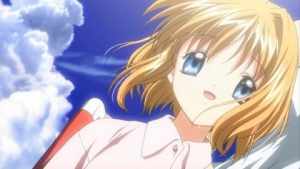
When AIR broadcast in 2005 it was praised for being a tear jerker in its final episodes. While many anime drama can make someone sad, crying is another story. Props can be given to the director, Tatsuya Ishihara for this careful choosing of how to execute the scenes which have made the series have an impact.
AIR has the theme of legends, supernatural and a mother-daughter relationships at its core, which is best presented in the first two episodes when Yukito, Mizuzu and Haruko are introduced, Minagi’s arc (episodes 5-6), Kanna’s arc and the ending episodes. There is also a negliable re-cap in episode 10. To greater emphasize these themes it might have been more effective to use the other 3 free episodes to more smoothly transition between Minagi’s arc, Kanna’s arc and the ending, as the first four episodes have been criticized for lacking story, with the bulk of AIR’s emotional impact derived from the last two thirds (Martin, 2007). With an “original, but questionably paced story”, perhaps AIR is not often looked back on with such high esteem because KyoAni has been consistently refining similar ideas.
Very importantly, one can not downplay the emotional impact of many scenes in these KEY adaptions, the ending to AIR included, so brilliant that the execution and direction was far superior and emotive than the film adaption by Toei Animation. Reviewer Josh Viel (2009) was so impressed with the series, he wrote, ” Unless you suffer from some sort of rare mental condition that prevents you from watching anything that isn’t chock full of action and exploding heads, I can only offer this advice: Watch this series.”. The visual novel adaption is blessed with some stunning songs, like Tori no Uta, which can usually be found on many ‘Best of Anime’ CD compilations in Japan. Those who prefer a more coherent story may find KyoAni’s next project, Kanon, more enjoyable. While legends are not the focus of Kanon, the focus on memories and to some extent illnesses are similar. However, it is difficult to say that these adaptions as a whole are stand outs.
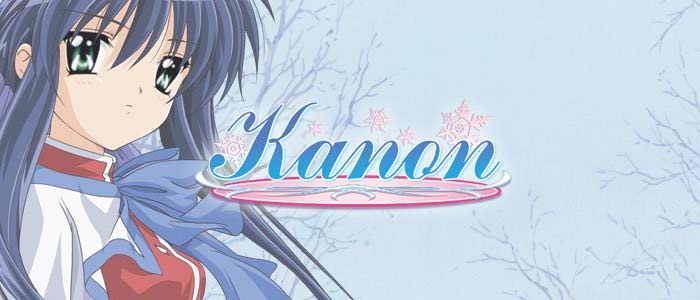
Kanon was a remake of a 2002 anime by the same name, and it improved upon this version beyond recognition, to the point where the original 2002 anime is described as shallow and the visuals ‘eye stabbingly painful’ (The Nihon Review, 2007). Kanon’s lead is incredibly likable, setting itself apart from many harem or romance anime. He has the same snark sense of humor as Kyon in The Melancholy of Haruhi Suzumiya, but actually voices these comments aloud which sparks entertaining interactions between the characters. With the help of Yuuichi, Kanon did something AIR didn’t which was balance comedy, drama and evenly organize character arcs so they all had equal importance.
The themes of lost memories and to an extent, family, are explored nicely and evenly, but it still has a number of flaws in its story. Today Kanon is often pointed to as an entertaining addition to the romance genre (Glass Reflection, 2013) and stands above many others in the genre of the 00’s. Even though AIR’s male lead has some background, he is not as memorable as Yuuichi. Like AIR, Kanon had some wonderful songs and a few very memorable scenes, like a dance scene between Mai and Yuuichi. Even if you don’t want to watch the series, it is worth watching this scene.
CLANNAD’s main character Tomoya is more down to earth as he has an apathy for school, comes from a troubled home environment and does not have the role of joker. Nagisa’s family is one of the better developed ones out of these Visual Novel adaptions and gives this series a sense of realism which is lacking from the previous titles. CLANNAD sets itself apart from other anime of the school life genre in its last quarter where Nagisa and Tomoya start living together beyond high school and transition into the world of adulthood. It is incredibly rare for anime to show this so this was a breath of fresh air. Besides the excellent Tomoya/Nagisa moments at the end of After Story which has brought CLANNAD onto many best of the decade anime lists.
High points aside, these series are extremely faithful adaptions of the visual novels which is more of a curse than a blessing. DVDs and CDs are far more expensive in Japan than they are in the West, with prices rarely put down, so anime is often aimed toward the only audience to collect them, the most intense of the hardcore. As such, these visual novels adapt every possible ‘story route’ with a large cast of characters to please fans of the game. This is a big mistake in cases where the cast is large, the characters backstory’s have unrealistic elements bordering on mildly obscure to absurd, which is a quarter to half of the time depending on the series. The overall effect of this means that the anime is of the ‘harem’ genre, and because of this the story is dragged out. In AIR, Kano is under the impression that a scarf on her wrist grants her magic powers, so she has never removed it. Slightly less extreme, Shiori from Kanon, Mizuzu from AIR and Nagisa from CLANNAD have an unnamed illness. Being faithful to the material aside, to create stronger writing the screenplay could have added in the name and specific symptoms of a chronic illness to make the anime more believable.
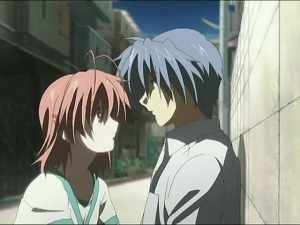
AIR and Kanon had fantasy overtones so they are allowed to stray from realism to a degree, but it is frustrating to think that if the magical or tragedy elements been fleshed out or slightly altered the tear jerking aspect would have been more emotive. CLANNAD had the most down to earth character arcs but Nagisa’s illness and the details surrounding her health-related decisions strayed believably from being so vague. Chronic illnesses usually impact every aspect of a person’s life and so the person is likely to be informed about what they have. Another fault of these being based on visual novels is that a lot of the musical score are renditions from the game, which the majority of the time do not make a lasting impression.
Another flaw in adapting every single character story means that some of the characters become negligible after a certain episode or are merely irrelevant to the main point of the story. AIR is the worst offender of this, as when Mizuzu’s arc starts all the characters introduced in previous episodes never appear again. Kanon evenly distributes its arcs and therefore had the strongest series structure, but it has the odd effect of making the the main romance appear out-of-nowhere. This was probably done deliberately to avoid the mistakes in the 2002 version. Both AIR and CLANNAD could have made the story more concise and powerful by limiting the plot to the core relationship. It is strange this happened at all since Fumihiko Shimo did the series structure for all these adaptions and in theory the improved screenplay of Kanon should have been present in CLANNAD. Toei Animation presented the main relationship in movie adaptions, however, these films lack the animation quality of the series and the writing is weaker, ending up as wasted potential. An alternate, also effective measure was to create separate OVAs to encompass particular characters. In CLANNAD this is done especially well in the one for Tomoyo, which stands as an effective story stand alone from the rest of the series. At other times, they are not very emotive but they fulfill their purpose without being attached to the main series.
Since these anime are basically harem shows – a lot of girls having crushes on the main male lead – how do they fare as romance series? It depends. Even though AIR, Kanon and CLANNAD were all based off adult visual novels only Kanon and CLANNAD have romance subplots, while there is something more than friendship implied in the final episodes of AIR. As previously mentioned, even if Yuichi is a very likable male lead for a harem series it is not certain who he has feelings for until the very end as the decision has little build up or rationale behind it. There are hints of romance with all the characters and this is heart-warming to watch as Yuichi is a genuinely nice guy without any hidden agenda or perversions so common in this genre, a definite plus.
The romance in CLANNAD happens more gradually than most but this is one of the strong points because it isn’t just a matter of the characters being in denial about their feelings. There’s also the plus of seeing how their relationship progresses beyond the initial love confession. Even if the fact all the other side characters develop feelings for Tomoya is seemingly based off very little, the relationship between Nagisa and Tomoya is one of CLANNAD’s most unique and memorable aspects. Out of these visual novel adaptions CLANNAD has the best romance and is worth a look for fans of that genre.
The high points of AIR and CLANNAD After Story surpass Kanon in emotional intensity but the glaring structural problems make them difficult to recommend outright. In an ideal world to showcase the high points of these shows without all the extra baggage, it would be interesting to see KyoAni make recap movies with new animation to better transition and link sections of the story together. This is a tactic they have managed successfully since with Chunibyo, Love and Other Delusions and Beyond the Boundary. If this were to happen these two projects would be far more enjoyable and better quality in terms of writing. Kanon is the easiest to recommend out of the three but the other two still have memorable and worthwhile aspects. It is worth seeking them out for if one is interested in their themes – legends and miracles for AIR, and family for CLANNAD.
The Messy Adaption of Haruhi Suzumiya
The Melancholy of Haruhi Suzumiya (hereby labelled Haruhi) is a light novel series that debuted in 2003 by law school graduate Nagaru Tanigawa and was completed in 2011 with eleven volumes. It is about a high school student, Haruhi, who says on her first day of school that she is only interested in meeting people related to the supernatural. Unintentionally, the one classmate who questions her ideas is dragged into the creation of her club, the SOS Brigade. The series was such a success that the last two books broke records in Japan and sold over five hundred thousand copies. The light novels have also been licensed and distributed in the West, Taiwan, South Korea and China. It is one of the few light novels to get an English release, as most publishers would prefer to stick to manga or anime releases. From that perspective alone Haruhi is a phenomenon, yet it is only a fraction of its impact when it joined the realm of anime.
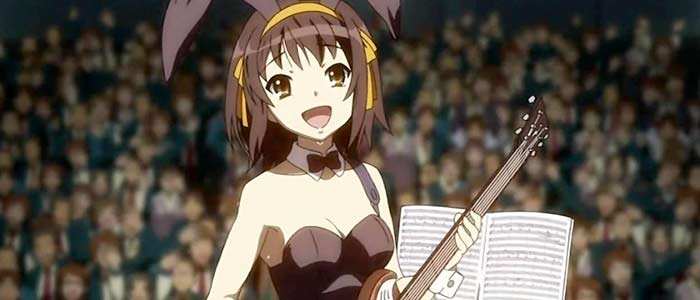
In 2006 when the anime was first released in Japan the internet fandom went crazy. A review website I often visited was AnimeNFO, similar to Anime List today, and the ‘new published reviews’ section had nothing but Haruhi for months on end. Similar patterns were visible on blogs and other websites. Fans were wowed everywhere by the interesting execution of scenes, fun characters and the series unique narrator, Kyon. The songs were also big hits in Japan and skyrocketed Haruhi Suzumiya’s voice actress Aya Hirano into stardom. Many fans, including myself, first heard about Kyoto Animation through this title and only discovered later that the company had worked on Full Metal Panic. Haruhi was the series that threw KyoAni onto the list of well respected studios.
The Hare Hare Yukai dance remains somewhat of a one hit wonder in anime fandom and it was performed in conventions all over the world for a number of years. When the english dub was being produced fans had the opportunity to vote to influence casting choices. An insert song was even dubbed, which is extremely rare and besides the lyrics the vocal performance was close to the Japanese. The series also spawned many character singles. In Japan Haruhi cosplay is still available in outlets. Despite the large volume of filler content, the company tried to fix the inherent problems with the structure of the source material by broadcasting the episodes out of order. This thankfully worked but it was not organized that way for the DVDs. Season two was hated by fans and casual watchers alike for the inclusion of the experimental Endless Eight and the lack of meaningful story material. In 2010 the series partially redeemed itself with the film adaption of the character detail ridden volume four, the Disappearance of Haruhi Suzumiya. It showcased the high points of the series, although it is a shame that the source material for the television series was not handled more intelligently.
To understand the full extent of the untapped and misused potential of the series it is relevant to reference the light novel. The anime first season was released in 2006 and the second in 2009. At this time the books were not finished. The anime adapted sections of the first six novels. These were broadcast out of order in relation to the anime, even when counting broadcast order. For example, the episode where Haruhi sings the absolutely stunning rendition of God Knows corresponds to volume six. The volume which made the movie The Disappearance of Haruhi Suzumiya was volume four, half way through the first season. The light novels are written in first person from the perspective of Kyon, and this is translated in the anime as often times too frequent narration. How do the light novels fare on their own? While the overall story and characters are interesting in the realm of light novels, there are entire volumes of uninteresting filler content that drag it down.
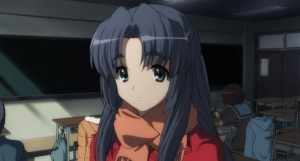
The books, like any given Doctor Who season, are divided into self contained short stories and plot or character related content. Short stories are not necessarily a bad addition if they are well executed, interesting or have some aspects of character development. Full Metal Panic Fumoffu and Hyouka have an identical structure but succeeded in containing the most interesting parts of the written material. Haruhi is an example of how not to adapt a light novel, and perhaps KyoAni built on this knowledge for later. The bulk of story development and character progression take place in volumes one, four, seven, nine, ten and eleven. The anime only covers a small portion of its high points.
Given the anime’s great volume of filler like material, especially in season two, it is endlessly frustrating that the creators didn’t wait until the novels were completed before beginning the project. That way they could have picked the best short stories of the novels and juxtaposed them with the overarching story. This explains all of the major problems with the series and why the initial spark of the phenomenon has fizzled out. That being said, it isn’t all bad news. Given the announcement of season four of Full Metal Panic, regardless of who makes the adaption, there is still hope for Haruhi. A Yuki Nagato spin off was released this year and the series has a chance to redeem itself if the remaining material is adapted appropriately, possibly if Shoji Gatou who worked on Hyouka takes up the job of structuring the material.
With fantastic animation, many influential scenes, songs, interesting leads but a troubled, poorly organized adaption, where does Haruhi stand as an anime? It is important to recognize that the anime only gives hints at the material to come and stands incomplete, even if the characters and overall story is very interesting. Wikipedia organizes the episodes in four different ways depending on if you want to follow the chronological, broadcast order each for the individual seasons or combined (light novel).
It is worth investigating Haruhi but it is important to approach it in a way that emphases its qualities. Season one alone is best seen in broadcast order to have the most effective build of tension over 14 episodes. The Disappearance of Haruhi Suzumiya can be seen somewhere in the middle to correspond to its place in the novel series. Season two is not worth investigating unless one is extremely interested to see Bamboo Leaf Rasphody or an edited version of the Endless Eight. The best we can hope for now is that one day KyoAni returns to animate the rest of the series in a more productive way.
Making the Ordinary Beautiful – Hyouka (2012)
After Haruhi KyoAni seemed to step away from its focus on very long, ongoing light novel series. This coincided with the Kyoto Animation light novel awards, which encompasses a number of the anime covered in the rest of this article. The first one of these was Hyouka, often called a ‘comeback’ from the overly cutesy content released by the studio after 2009. The light novels began in 2001, written by Honobu Yonezawa. There are currently five novels and the anime released in 2012 covered the first four. The anime release had a very positive effect on sales of the books and the covers even got reprinted with new artwork from KyoAni. The author abandoned the light novel format and has supervised the creation of the manga which began publication the year the anime came out in Monthly Shonen Ace magazine. This format for the series has been successful with the ninth volume of Hyouka manga ranking at number 34 in August 2015. According to Japanese manga retailer Honto the story has not yet gone beyond the story in the light novels. Hyouka, like Full Metal Panic, hasn’t held the same impact or popularity as some of KyoAni’s other titles, but it is a high quality series in the slice of life genre, standing above many anime with similar ideas.
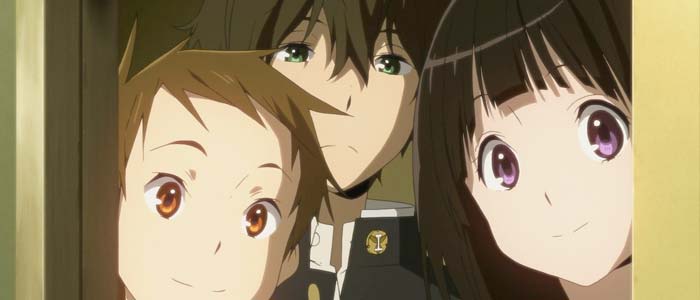
Out of all their creations so far, Hyouka is a near perfect representation of KyoAni’s goal of making mundane events interesting, made obvious by the opening narration of episode one. This is displayed in an ongoing way throughout the 22 episode run by the dynamics between the two main characters, Hotaro Oreki and Eru Chitanda. Much like Haruhi Suzumiya, Chitanda finds a lot of joy in exploring the unusual (frequently shown by her catchphrase of ‘I’m curious!’), although her methods and personality are not brought to the same extreme as Haruhi. She is quiet, polite and kind, contrasted by the lazy, uninspired Oreki – who fills a similar role to Kyon in Haruhi. He spends half of the series opposing a lot of Chitanda’s apparently irrational interest in life, until he gradually discovers that he shares an enthusiasm for problem solving and takes pride in his quick thinking, logic and effective brainstorming. This is something his friends praise him for and Oreki learns that he can make his life interesting by approaching it in a different way. This growing respect and admiration for Chitanda develops into a very sweet, yet subtle romance.
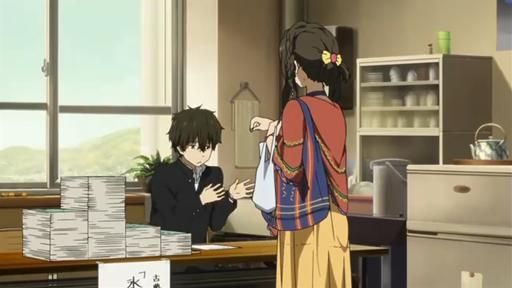
Like the KEY visual novel adaptions, Hyouka does not have much of an overarching story but it makes up for this with pouring a lot of love into its characters, tactful expressions of mood and some interesting self contained stories. The first two episodes are the most difficult ones to get past as there is no specific story arc, but merely an introduction to all the characters. Episodes three to five contain the first story arc which gives us the meaning behind the series title, as well as some information about Chitanda as a character. Episodes 8-11 contain a more conventional mystery story which involves the events of a student film. This is where Oreki begins to discover that he has a talent for brainstorming a wide range of ideas.
The mysteries are usually explored in an interesting way. For example, Hyouka’s festival arc takes several episodes when in most anime it is confined to half an episode. There are multiple different hiccups with the event organization that the characters try to solve. It is an entertaining and realistic way of showing a festival, as these sorts of problems occur very easily due to circumstances outside ones control. Oreki’s attempts at distracting himself from boredom when minding the desk is amusing. Other themed episodes like Valentine’s Day, a hot springs and New Years are very common in anime but are shown in a different way in Hyouka. The hot spring and New Years episode develops the two leads as characters and their relationship, while the Valentine’s day episode is expressed from the perspective of one character helping a friend.
Solid writing aside there are many other qualities to Hyouka. The score by Kouhei Tanaka (Angelic Layer, Rosario & Vampire) is pleasant enough that it could be listened to on its own. Instruments range depending on the scene and mood required, enhancing many sequences, like renditions of Bach and other classical music at the end of the hot springs episode. The theme songs are also memorable. ChouCho, who made her lovely vocal talent first known in Heaven’s Memo Pad, released her fifth single as the first opening song of Hyouka. The ending songs were provided by the voice actresses in the television show like character songs, but they are also catchy.
Sadly, the series has yet to be released in any legal capacity in the West, likely because it wasn’t a big hit in Japan or in the West as it was airing. This is likely because of the slow first two episodes which could be a barrier to new viewers, although it would be nice to see a subtitled release sometime in future. The series may not be looked on by fans as a ‘hit’ but it is a high quality series that, although subtle with its themes, expresses the high points of life.
Music in K-ON! (2009) and Sound! Euphonium (2015)
When K-ON! was released in 2009 it seemed obvious why KyoAni had decided to adapt a manga about a school band, given the overwhelming positive feedback of Aya Hirano’s insert song performances in Haruhi. K-ON! was an incredibly popular series when it was released. K-ON! and Haruhi are often labelled as the beginning of a sudden boom in ‘moe’ anime material, in this case referring to cute girls doing cute things, however in the West K-ON! did not reach the same impact as Haruhi. The character designs by Yukiko Horiguchi (Kokoro Connect manga) became so influential that aspects of the eyes, hair and face shapes influenced the artistic style of Haruhi season two and the movie.
Many other anime during K-ON!’s 2009-11 run time appeared to be basing their cutesy characters off the K-ON! cast. Not only that, the K-ON!’s insert songs were very popular and spawned character singles. After K-ON!, KyoAni’s next adaption of a story involving music was Sound! Euphonium in 2015. Even though K-ON! was based on a manga and Sound! Euphonium a novel, they will be grouped together in this section for their shared inclusion of music in a high school setting.

K-ON! was based off a manga by a man named Kakifly, who also likes to also play guitar. It was completed in 2012 with six volumes. Sound! Euphonium is a light novel adaption by Ayano Takeda. It has three volumes so far and is not finished, however a second season has been announced. K-ON! is often referred to as a slice of life comedy, and while Sound! Euphonium has its lighter aspects, it is more a drama. The two are both based in high school and involve taking up music as an extra curricular activity. As a result the quality of story and characters are vastly different between these two titles. For one, K-ON! isn’t just based off any comic strip, but a yonkoma – a manga with four panels. This style of manga often involves repeated jokes and short skits that are designed to fit on one page. Adapting this kind of material into anime can be challenging. Azumanga Daioh is a well known anime from the early 2000’s that used this style. It very clearly had no continuing plotline with simply funny things happening to the characters in obvious five minute skits, which can be hit-or-miss depending on whether you find humor in the ongoing joke.
More recent titles that had a repeated gag, but in a more chronological order with some semblance of story progression were B Gata H Kei (2010) and Monthly Girls’ Nozaki-kun (2014). K-ON! is very similar since the stories are almost entirely self contained once Yui gets her guitar, with the exception of when club members change due to the passing of time. It is incredibly easy to watch any given episode of K-ON! and follow along. KyoAni took a lot of creative liberty with the material, extending six volumes of jokes into 39 episodes and a movie.
The characters have enough individual details to make them likable and memorable although they won’t win awards for complexity or realism. Like all yonkoma K-ON!’s humor is often repetitive and may not appeal to everyone, so the potential of enjoyment hangs on this gimmick, since it lacks any major character progression, drama or conflict. This means to those who like the jokes and cuteness, K-ON! will be a lot of fun to watch, but for anyone else the anime will come off as flat and uninspiring – but hey, they might buy a CD. Like Hyouka, the creation of the K-ON! anime boost sales of the original manga considerably, the first two volumes reaching number 19 of the Japanese Comic Book ranking in 2009.
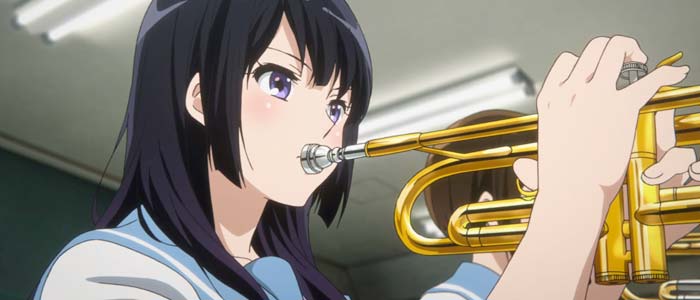
In the second episode of Sound! Euphonium the music ensemble’s adviser asks the students if they would like to focus on going to nationals and taking music seriously, or merely use the meetings as a pivot for social interaction and play for the enjoyment of it. In Sound! Euphonium the class says they would like to go to Nationals. Due to the laid back characters and music playing in K-ON!, it is clear that if the Ho Kago Tea Time girls were asked the same question, they would pick playing music for fun. This summaries quite well where the two anime’s story elements differ. K-ON! is, like their various band names suggests, light music played during after school tea time. In Sound! Euphonium the girls have to discipline themselves and perfect their musical ensemble, which adds a lot of suspense, tension and conflict between the characters, aspects that K-ON! inherently lacked from the different approach. Again, this isn’t necessarily bad if the style of humor fits with the viewer, but Sound! Euphonium has a variety of other aspects in-cooperated into its narrative, such as hints of romance, family drama and character development, so makes for a more concise, well rounded viewing experience. Given that KyoAni strives to improve on its previous work, it is possible that Sound! Euphonium was an attempt to perfect the work done with K-ON!.
Of course, there’s music to consider as well. K-ON!’s insert songs are far more marketable as they fit nicely into the Jpop scene as that is the vast majority of material sold at CD outlets in Japan. They vary in quality but are generally catch and fun. The opening and ending songs used for the series used the voice talent from the television show, not unlike the use of the band Changing my Life in the series Full Moon o Sagashite (2002). Surprisingly, Ho Kago Tea Time do not correspond to an idol group outside of the anime, but it appears to have been successful all the same. Since Sound! Euphonium involves a music ensemble, it has instrumental pieces for its in-episode material. There is an element of personal preference that comes into this aspect of the television shows, but generally speaking insert pieces are used the same way in Sound! Euphonium as they are in Your Lie in April (2014). Outside of in episode pieces, the musical scores were put together by composers only just getting their beginnings in anime production, although both are effective to set mood and are pleasant to listen to.
Interestingly, both K-ON! and Sound! Euphonium therefore involve an educational component where the characters discuss how to maintain and play the instruments. This aspect can be interesting to those who have not played an instrument, but the inclusion of music at school has driven many musicians to watch K-ON! and Sound! Euphonium to see how accurately it fits with their experiences in high school. It may be a stretch to compare the two given how vastly different the source material was, but Sound! Euphonium is a more well rounded production that has the potential to appeal to a much wider audience because of the mixture of both lighter and darker aspects, both in the story and the way the characters relate to each other.
Magic in Modern Japan – Chunibyo (2012) & Beyond the Boundary (2013)
Maybe as a variation on making the ordinary interesting there are a number of series in KyoAni’s repertoire that involve fantasy or magical elements. Haruhi could technically fit into this category but given the its monumental influence and the strange methods of adaption and broadcast, it was given it’s own section. These titles include Chunibyo, Love and Other Delusions (hereby referred to as Chunibyo) and Beyond the Boundary. Both are based off ongoing light novels released within the same decade, varying between three and six volumes. It was in this point in time where KyoAni lost a lot of its momentum as a number of these series recycle previous KyoAni’s ideas without improving upon them. However, there are strengths and weaknesses of each so they their screenplay elements will be compared with each other.
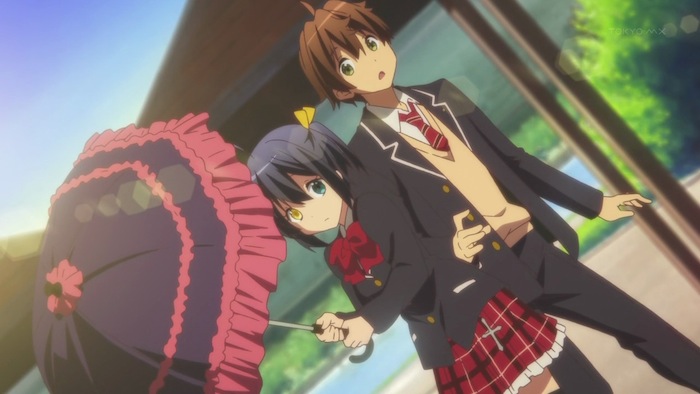
Chunibyo has the most down to earth story out of the three as it tries to explore the concept of ‘eight grader syndrome’, which in Japan is someone who is obsessively interested in the occult. The characters in the series either had eight grader syndrome in the past or never grew out of it, and the series follows a romance between the two leads. Its fantasy sequences are also derived purely from the imagination, something which sets the series apart from other KyoAni titles. Even if the thin premise is derived entirely from Rikka’s own craziness, it is the character interactions that make the show charming. Contrarily, Beyond the Boundary has more of a story, but it isn’t particularly original. The terminology and dynamics of its good versus evil plot are not expressed in a new way and the romance is very unbelievable. As written in a previous Beyond the Boundary review, each character exists to fulfill a certain stereotype with only shallow details polishing their moe surface. Even if Rikka looks and acts like a small child, the romance for Chunibyo is still more endearing than in Beyond the Boundary.
Like Haruhi, it is a shame that these series were adapted into anime early on in their publication schedule, as without having an understanding of the full story it is difficult to successfully decide what elements of the story are worth keeping or discarding. As such, these anime have reasonably decent ideas but, like Haruhi, they are watered down to such an extent that it weakens the screenplay, its message and entertainment value. Chunibyo is divided into two seasons but considering the number of episodes that pass without character or story development, the material could have been condensed into one.
Like Haruhi and Hyouka, the dynamic between the two leads is similar, with the male trying to offset the eccentricities of the female. Unlike Hyouka, this chemistry does not evolve or change the characters in a substantial way, with Rikka remaining obviously dysfunctional throughout, although an attempt is made to justify her behaviors. Thankfully, unlike the aforementioned Visual novel adaptions and Haruhi, KyoAni attempted to remedy this problem by compressing both series into recap movies, which eliminate a lot of the pacing problems of the television series while retaining the spirit. Sadly, it is obvious they are recap movies due to some poor editing choices, although they still convey the core story in a much more efficient way.
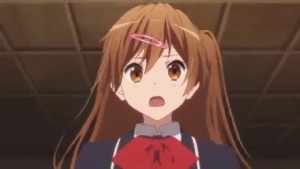
For example, in the Rikka’s Version movie of Chunibyo, the episode one recap section rushes past scenes at top speed, with so little transition that the characters literally jump from location to location without explanation of how they got there. Half way through there is an awkward montage of filler episode clips with the narration of, “Some stuff happened, but I don’t remember it.”. It would have been more efficient to use these clips as a credit sequence instead of disrupting the flow of the movie. Even with a summary film Beyond the Boundary remains somewhat of a spectacle piece with little substance, similar to any Hollywood blockbuster. The two main characters are neither realistic or likable, as they merely recycle traits from previous KyoAni characters seen in other titles. TheBeyond the Boundary sequel film gives Mirai more background, but it doesn’t not fix the problems with the series as it still has pacing problems. If KyoAni were not so concerned with being faithful to the source material it would have been more effective to go straight from the events at the end of the series to the second movie without wiping Mirai’s memory, as this plot point only seems to delay the conclusion, which ultimately rehashing the same material of the last episode.
Negativity aside, again, Beyond the Boundary and Chunibyo have some fun moments, like the idol dance and portions of Chunibyo’s second season. The score for both series is also very effective at enhancing scenes, and the ending song and sequence for Beyond the Boundary is one of the strongest credit sequences KyoAni have ever done, but it seems like the magical element of KyoAni’s stories have not been perfected yet. One hopes that Myriad Colors Phantom World can overcome its initial flood of criticism from Anime News Network’s preview guide and become a solid addition. The source material has been completed so it is possible that Myriad won’t have all the same problems these titles had.
Both Chunibyo and Beyond the Boundary have major writing flaws as television series, and even though the film versions fix a lot of these problems, they are still not KyoAni’s best work. Chunibyo is the stronger series of the two for the chemistry between the two main characters, although the recap film adaption is recommended because of its removal of filler from the first series.
Comedy and Ridiculousness – Lucky Star, Nichijou & Amagi Brilliant Park
Most of the time KyoAni creates anime that have more than one genre, but there are three series which were marketed purely as comedic anime. Lucky Star and Nichijou were based off hugely popular four-panel strip manga with copies sold in the millions, revolving around the daily life of a group of high school friends. As with all anime structured into skits the enjoyment factor of each series depends greatly on one’s subjective sense of humor. These two series set themselves apart from KyoAni’s previous work with the minimalist background art and chibi, relatively simple character designs. If the two are structured the same way, what elements make them different?
Konata from Lucky Star is an otaku so many viewers could relate to her and she became incredibly popular. This could be a contributor to Lucky Star’s success in Japan. Nichijou’s cast is slightly more varied, including an animal and a robot, but the DVDs sold so poorly in Japan that KyoAni lost money. A similar pattern was shown in the West as Lucky Star was the only one to get an english language release. However, the skit structure of the two series are incredibly similar with the only major difference in Nichijou having more water colored style background art and more fluid animation. Despite Nichijou having the subtitle of ‘my ordinary life’, the series has many more absurd elements than Lucky Star like in the first episode a teacher getting hit in the face with a salmon. While Konata may be a more memorable character, Nichijou is production wise a nicer looking show.
Since there is literally no overarching story neither of these series will change your life whether or not you watch them, so it is worth seeing an episode of each or to look up a ‘Best moments’ montage on Youtube. In terms of otaku female characters, a more recent anime title called Watamote looks at the darker aspects of this subgroup.
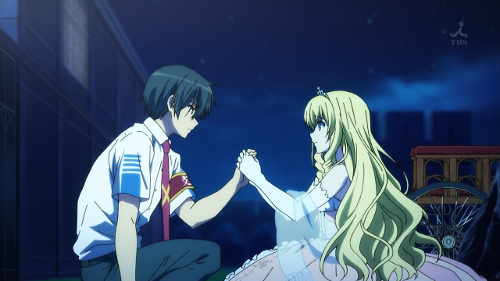
Amagi Brilliant Park is a strange abnormality in KyoAni’s resume. It was based off a light novel by Shoji Gatou, the author of Full Metal Panic, but is almost unrecognizable from the other title. It concerns a theme park ran entirely by animal and human-like creatures from a magical dimension, and the main character is a high school student who is forced to prevent it from closing. Taking its cues from the comedy aspects of Full Metal Panic Fumoffu, the series is nearly all self contained stories structured around business goals for the theme park. The crazy antics between the creatures and the main character, Kanie, who couldn’t care less, make the series entertaining.
Like Full Metal Panic Fumoffu, Amagi Brilliant Park is derived from a premise than any plot, although there is semblance of order to the episodes, as emphasized by the shot at the end of each episode that says how many visitors the park has and the money it has raised. The mascots are particularly memorable for how ridiculous and crude their personalities are and this gimmick differentiates the series from the comedy aspects of Chunibyo and Beyond the Boundary. Fans of Fumoffu are likely to enjoy the style of humor in Amagi Brilliant Park and the characters will stay with you once the series finishes. It has a few touching moments, the pacing is reasonable, but since the plot elements are so ridiculous the show is only likely to appeal to anime fans.
Overall, while the four-panel style shows will succeed or fall flat depending on one’s sense of humor, Amagi Brilliant Park is a safe recommendation for fans of Full Metal Panic Fumoffu.
Moe and Fan Service in Tamako Market & Free!
After seven years of adapting material KyoAni finally created their own original anime in 2013 called Tamako Market. It is a twelve episode series that surrounds a girl Tamako who’s family owns a mochi store in a market strip. Seemingly adapting the character designs from K-ON!, Tamako Market has a very similar narrative structure to the music title. It is premise driven, with self contained stories and next to no character or story depth. While K-ON! is driven by the interactions of the club members, Tamako Market extends this to include interactions between Tamako, her friends, the strange talking bird who follows her and the neighbor who happens to be Tamako’s love interest. Like Amagi Brilliant Park, episodes of Tamako Market revolve around different business endeavors of the mochi store and this series more than most anime teaches the viewer about various aspects of Japanese food, festivals and culture.
Over the years many anime fans have tried to define the most effective presentation of the ‘moe’ genre, which is essentially cute girls doing cute things. While K-ON! is a very popular demonstration of moe, and nearly every single KyoAni series has moe characters in them, Tamako Market is KyoAni’s perfected execution of the idea, with the cutesy, colorful artwork, the varied characters, small episode count and sole focus on slice of life. As with other moe titles, the lack of story in Tamako Market will draw a lot of viewers away, it will suit viewers who would like a light and fun show after a long day. The movie sequel Tamako Love Story can easily be watched without any introduction to the series, although it basically a movie length rehashing of the main romance arc in Card Captor Sakura and can not be so easily labelled as a “moe” title. Those who have seen Card Captor Sakura will find very little novelty in Tamako Love Story, but those new to anime may enjoy it.
KyoAni’s biggest hit of 2013 was Free! Iwatobi Swim Club, an anime based around a group of high school boys who compete against an old childhood friend in a swimming tournament. A number of bloggers and anime fans, like the Anime News Network podcast, have described the series as a K-ON! clone with hunky guys in swimming trunks. This is not far from the truth as the series has been criticized for a thin story and relying too much on flashbacks to bring out character depth (Bridges, 2015).
The series sets itself apart from other KyoAni productions from being a sports anime but the biggest impact the series had was to create fan service for girls (generally speaking of course). It made an impact on the anime fandom at large for doing something different with its character artwork, with the goal of making the viewers swoon from the too-well-animated six packs, musculature, hair swishing and constant undressing. This fan service element has spawned many popular parodies and abridged series on Youtube. Free and Tamako Market are excellent additions to their specific genre, but their lack of story and surface level characters may be too dull for some viewers.

Kyoto Animation has established itself as one of the most well respected studios in anime today. It has created a number of extremely popular series which could have sparked the increase in ‘moe’ anime between 2007-12. The company likes to learn from mistakes and perfect their ideas, so with that in mind, what series stand out?
The anime which have had the biggest influence on anime fandom are without a doubt Full Metal Panic, The Melancholy of Haruhi Suzumiya, K-ON! and Free!. Their most mature projects to date are Full Metal Panic: The Second Raid, The Disappearance of Haruhi Suzumiya, Hyouka and Sound! Euphonium, with the previous two being stand out, refined versions of their respected genres. Moe has been a nearly constant theme in KyoAni’s titles for a good part of a decade, but the most effective example of this is Tamako Market, with K-ON! coming at a close second. Beyond this KyoAni has a number of series with powerful sections although they are difficult to recommend outright as they may not appeal to everyone. Haruhi’s first season only is worth a look in broadcast order, the Visual Novel adaptions are worth investigating for fans of melodrama. The movie recaps of Chunibyo and Beyond the Boundary, while still flawed, are superior to their television series counterparts.
What about those who are not well versed in anime? It is difficult to say as it depends on how much ‘weirdness’ and obscurity one viewer can swallow. However, KyoAni’s series usually make the fantasy and story elements easier to consume by inserting very down to earth male characters to contrast the eccentric (usually lead) ones. For action fans, Full Metal Panic and the Beyond the Boundary film adaptions are safe recommendations. Romantic comedy or melodrama fans will find enjoyable aspects in The Melancholy of Haruhi Suzumiya, Sound! Euphonium, the film adaption of Chunibyo and either Kanon or CLANNAD if they don’t mind magical elements. Those who prefer subdued, down to earth anime could be recommended Hyouka or Free. K-ON!, Tamako Market or the comedy series are for anyone who just wants light, largely episodic entertainment. Compared to other studios, KyoAni has provided many gateway series for new fans and has value from this aspect, although KyoAni has yet to reach the perfect formula for series to take off in the US like Attack on Titan or Fullmetal Alchemist.
Even though many of their video game and light novel adaptions have major pacing problems due to trying to please the hardcore fans of those products, Kyoto Animation continues to receive well deserved praise for its animation quality and creating touching, entertaining stories. The studio is still going strong with a new title slated for next year. Hopefully KyoAni will perfect their attempts of fantasy and complete Full Metal Panic or The Melancholy of Haruhi Suzumiya in the next few years. KyoAni seems to struggle with picking strong source material with complex characters and stories, so it would be interesting to see them branch out and adapt more mature written works. Until then there is at least one anime in their repertoire for everyone, and it is my hope that one day KyoAni will make non-casual fans as excited as hardcore ones are about one of their works.
Works Cited
Anime News Network. (2009). Japanese Comic Ranking, May 4-10. Retrieved 29th November 2015 from: http://www.animenewsnetwork.com/news/2009-05-13/japanese-comic-ranking-may-4-10
Anime News Network. (2011). Animator Shunji Suzuki Confirms Nichijō, R-15, Itsuten’s Low Sales. Retrieved 3rd December 2015 from: http://www.animenewsnetwork.com/interest/2011-10-01/animator-shunji-suzuki-confirms-nichijo-r-15-itsuten-low-sales
Anime News Network. (2015). Japanese Comic Ranking, August 24-30. Retrieved 27th November 2015 from: http://www.animenewsnetwork.com/news/2015-09-02/japanese-comic-ranking-august-24-30/.92450
Beaumont, C. (2015). Shall We Date? The Niflheim+ [Review]. Retrieved 27th November 2015 from: http://claritabeaumontsanctuary.blogspot.com.au/2015/09/shall-we-date-niflheim-review.html
Bridges, R. (2015). Free! – Iwatobi Swim Club Sub.DVD [Review]. Anime News Network. Retrieved 3rd December 2015 from: http://www.animenewsnetwork.com/review/free-iwatobi-swim-club-sub.dvd/.88186
Cavallaro, D. (2012). Kyoto Animation: A Critical Study and Filmography. US: Macfarland & Company, Inc.
Garcia, J. (2015). Top 10 Adaptations in Anime – Visual Novels [Recommendations]. Honey’s anime. Retrieved 27th November 2015 from: http://blog.honeyfeed.fm/top-10-adaptations-in-anime-visual-novels-recommendations/
Glass Reflections. (2013). Kanon 2006 Review [Youtube video]. Retrieved 27th November 2015 from: https://www.youtube.com/watch?v=genx6aekDLs
Hyouka Manga Volume 9. Honto.jp [translated]. Retrieved 27th November 2015 from: http://honto.jp/netstore/pd-book_27261014.html
Kyoto Animation (2015). Official website [translated]. Retrieved 24th November 2015 from: http://www.kyotoanimation.co.jp/
Martin, T. (2007). AIR DVD 1 Review. Anime News Network. Retrieved 19th January 2016 from: http://www.animenewsnetwork.com/review/air/dvd-1
Miller, B. (2013). Visual Novel Video Games are Big in Japan, Small Elsewhere. Nvate. Retrieved 27th November 2015 from: http://nvate.com/12243/visual-novel-video-games/
Picard, M. (2013). The Foundation of Geemu: A Brief History of Early Japanese video games. Game Studies, 13(2). Retrieved 24th November 2015 from: http://gamestudies.org/1302/articles/picard
The Nihon Review (2007). Air (review). Retrieved 19th January 2016 from: http://www.nihonreview.com/anime/air/
The Nihon Review (2007). Kanon (review). Retrieved 27th November 2015 from: http://www.nihonreview.com/anime/kanon/
Viel, J. (2009). Anime Review: Air. Retrieved 19th January from: http://www.escapistmagazine.com/articles/view/video-games/editorials/reviews/anime/6931-Anime-Review-Air
What do you think? Leave a comment.




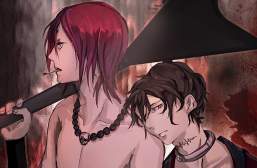
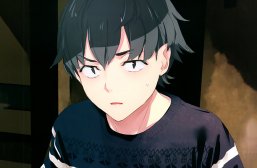

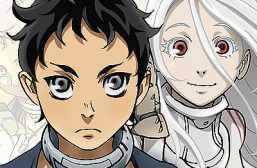
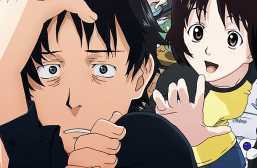
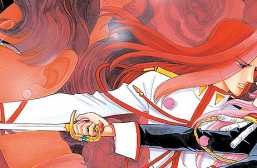
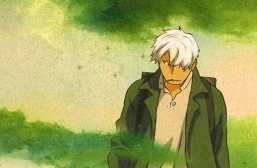
Haruhi Suzumiya and Lucky Star wer the first non-action-shonen anime that I watched, while fully recognizing anime as it’s own distinct medium and they’re both shows that have left a lasting impact on me to this day.
God do I love KyoAni, each and every show I’ve watched from them I’ve loved. Plus, they gave me my favourite series of all time, K-On! Hyouka was fantastic, so was Euphonium.
They’re great. Their animation is fantastic, and even when they make poor anime for their standards, they usually wind up being solid 7/10’s overall.
Kyoto Animation is the only animation studio in Japan who uses only in-house talent at their studios or their two subsidiary studios for productions. Respect.
Yep, KyoAni is one of the only studios that actually wants their employees to stay alive and pay them well, that’s why their staff fucking love working with them and it shows in the animation.
Thanks for this. It’s hard to find any details about KyoAni’s history apart from here and the (mostly unsourced) Japanese Wikipedia.
Goddamn, the character designs in Air / Kanon / Clannad are so appalling.
The eyes are gigantic, but I think the KyoAni designs are far better than the ones from their respective video games.
I like them, but it’s not the fault of Kyoto Animation.
It’s a shame that Nichijou didn’t do well in sales, especially since it’s one of my favorite KyoAni works.
The evolution in style over a fairly short period of time that occurred once KyoAni started making their own shows is really fascinating. They went from FMP to the Key visual novels, to the massive genre-defining moe hits of Haruhi, Lucky Star, and K-on, to Free! It’s really incredible.
I love seeing the evolution of their signature style over time, and I also love that they’ve proven they can do just about any style successfully if they want (e.g. Nichijou and the Chuunibyou Depth of Field shorts, both a far cry from their other series but still look as good as ever).
Great video insertion.
Great article. I really like Kyoto Animation, even though I only watched two Anime from them, Haruhi and Chuunibyou. The only thing I might disagree with is saying the characters don’t change in Chuunibyou. I could actually argue they do change, especially since originally Yuuta was out to try to quell the eccentric Rikka and in the end, actually embraced, if anything defended it. It gave him peace with his own past youth and started embracing that instead of trying to grow up too fast. When looking at the Anime through the lens of maturity, things appear different.
As for Haruhi… great Anime. No question.
Wonderful studio and highly successful. Thank you so much for highlighting it. This is the best site.
Chuunibyo-that was one of my first entries to the anime romcom genre and I love it to bits.
The shows I dislike from them are pretty much only Haruhi, because of Haruhi, and Kyoukai no Kanata for it’s jumbled ideas and plots. Everything else has managed to keep me entertained well enough.
Kyo-Ani is a pretty fascinating studio.
Great solid studio for me. My top three works of theirs is probably Clannad, Hyouka, and the Disappearance of Haruhi Suzumiya.
I decided also to throw a little top 5 of my favorite Kyoani works.
1- Tamako Love Story
2- Hyouka
3- Kyoukai no Kanata: I’ll be There – Mirai Hen
4- Tamako Market
5- Hibike! Euphonium
Just K-On and Clannad alone would be enough to call KyoAni my favorite studio.
Consistently top-quality animation, in every variety from the wackiness of Nichijou which has some of the most impressive animation I’ve ever seen.
Best studio, hands down.
kyoani is my guilty pleasure, i really love their work.
And we’re still waiting for Hyouka.
I loved Chuunibyou, and have refused to watch the second season because the first is such a single, well-contained plot with an ending I don’t need to go beyond – an ‘invisible boundary line’ for my interest to fall behind – added to the fact that everyone seems to hate the second season. With the second season having an addition to the title, ‘Ren’, it’s suitable to consider it as a separate work to the first, like it’s suitable to separate different renditions of Star Trek.
I agree with SpectreWriter above; the characters certainly evolve satisfyingly in the first season, with the climax of Dekomori’s character development being an unexpected tear-jerker for me. You never expand on why the show has a ‘thin premise’ (how is K-On!’s any fatter?) or what ideas are ‘recycled without improving on them’, or what exactly in the first season is filler (when the second season is the one constantly criticised for almost always feeling like filler – doesn’t each episode in the first season develop a character in some direction, preventing the tag of ‘filler’ from being applied?).
The article also falters on its research here; Chuunibyo was so heavily adapted from its source material that many actually noted (in protest or praise) that KyoAni didn’t want to be rooted by the LN’s publication at all. Things were /added/ to the LN to make it adaptable, as the Director, Tatsuya Ishihara, once noted in a NewType article:
‘Shinka Nibutani appeared in the novel, but Kumin Tsuyuri and Sanae Dekomori are anime original characters. The reason they were created was that there wouldn’t be enough characters for a TV series. Similarly, the story has been /arranged/ to have many new elements added.
The amount of novel material we had was insufficient even though it was published via Kyoto Animation’s KA Esuma label. In short, it feels more like /an original series/ from our company.’
Note at this point that the Director considers it ‘an original series’, singular. It wasn’t split into two; it was their own finished story that got a sequel that, according to reviews, disappointed many fans. Once you consider it under that light, many criticisms in this article drift away from it; perhaps new ones can be found, but they aren’t to be found here, where the two very separate seasons are wrongly mashed together.
Also, Eighth Grader Syndrome is not specifically associated with the occult; it encompasses many other delusions of fantasy and grandeur.
As much as it’s welcome to see a suggestion to shorten anime rather than lengthen it, it’s not evidenced enough here. The article assumes wrongly that the two seasons comprise one story and makes a number of vague accusations that, really, have probably been written about every anime by someone on the internet so far. Evidence is what matters, and the opportunity to delve into specifics has been missed.
Long comment again, but I guess it’s what I do.
I like this comment, of course I might be the only one who actually liked the second season. Maybe not as good as the first, but still good. And yes, I remember thinking what eighth grade syndrome is and the article does say it’s primarily for the occult even though in actuality, eighth grade syndrome is present in most kids in some form, occult or no occult. Then again, everyone sees things differently and the Chuunibyou section is the only one I had a gripe with.
Hurry up and publish some articles so I can actually get this feedback before articles are published. 😛
I don’t see what you mean about how having shows ‘shortened’ isn’t ‘evidenced enough’. That sort of deduction is always going to be an opinion. It’s not like television making is science where you can figure out what parts need to be kept and cut with a formula.
To me, filler is something which doesn’t add anything to the characters or the story. Large portions of Chunibyo is just the characters hanging out and having fun…. which didn’t seem like the point of the story. To me, it was about the main relationship between the two characters, and Rikka’s issues with 8 grader syndrome.
K-ON’s story is even thinner with Chunibyo… I don’t see why you are comparing the two when I didn’t even try to do this in the article. Their goals are different. Haruhi has more in common with Chunibyo than K-ON does with Chunibyo.
I have a number of writing commitments at the moment, so I’m slowly getting around to writing for here.
While it isn’t possible to get the idea of ‘filler’ down to an exact science, it always needs a convincing explanation. Try telling someone who felt like they were following a plot through every episode that they were just watching ‘filler’, and they’re not really going to be on board with what you have to say about the show. All artistic deductions are opinions, and they all need evidence to be convincing; an appreciation of the specifics of the material. Then the reader has something specific to dispute, rather than only a vague understanding of your viewpoint. I could, for instance, catalogue how every episode of Chuunibyo develops a character in some way, and then compare that to how the OVA /doesn’t/, in order to make a convincing case for what it filler and why the first season does not contain it. It would not take long.
Likewise, my note about K-On! was drawing attention to the fact that standards for a premise were never explored before or after one was called ‘thin’. It’s like if I said a show was ‘thematically challenged’ and left it at that, not making any discussion about what constitutes a good or bad theme, expecting the reader to share my standards when they aren’t at all expounded upon. It creates a viewpoint that merely floats in the air above the material rather than being grounded in it.
I haven’t seen K-On so I can’t exactly comment on that, I only take issue with Chuunibyou and that’s why I agree to much with Jeko above. What can I say, I’m biased for it. But I’ll actually go ahead and point some episodes out. The episode where Rikka lives with her family and you learn about her past actually give great insight into her mentality, even give a whole other meaning to the Ethereal Horizon, the show openly shows Yuuta staying limited with what he has to put up with, but their romance is kept real, and not overdramatic, and he slowly begins to accept what is around him. When talking about slice of life, one could very much argue that any anime has stagnant characters that remain the same throughout, especially Kyo-Ani’s Haruhi Suzumiya, but their characters change and they change behind the scenes, and what happens behind eventually shows up front. It takes time. But by the end of Chuunibyou, many changes have happened to the characters, it’s almost hard to believe how they all started out. Even Rikka is a little more down to earth.
Literally the only studio that could probably animate a piece of shit (Figuratively although probably literally too) and i would throw my money at it with a wide smile on my face.
Hibike introduced some of the most likable characters I’ve seen from their show.
I frigging love KyoAni! KyoAni was the first anime studio that made actually think about anime studios in general and how each of them differ from one another. There’s this certain unique KyoAni flair to their every show. No matter the genre or setting, you know that they will always put a smile on your face and make you genuinely care about the characters. Not to mention, that all of their shows are frigging gorgeous!
If all they had done was make Nichijou, they would still be my favourite studio.
Thank you for the great overview. This studio does it all and they are a respectable company too!
Everything they touch is god-tier.
KyoAni is small yet produces one of the best quality animations at present.. in anime.
Still waiting for Full Metal Panic new season!
The studio puts a lot of effort into their works. Most of their shows have gorgeous animation quality. Not exactly my type of anime though…
I’ve seen various KyoAni works, and have yet to see a bunch more, but the one that stands out to me the most so far is Hyouka. The artwork is INSANE. From the eye sparkles, to the little quirks the characters do (like Oreki holding his hair when he thinks), and especially the cherry blossoms that I love in anime, everything just looks beautiful.
I really enjoy their works, dig their artstyles, and I’m pretty hyped for the Koe No Katachi film.
KyoAni is definitely my favourite studio. Every moment of the shows they produce oozes with life. It’s easy to see the amount of love and care they put into their work.
I just want to thank them for Hyouka.
Euphonium is really beautiful
KyoAni is helped me find out I love moe and SOL. K-On is amazing. Hyouka is amazing. Nichijou is amazing. Amagi Brilliant Park is easily my favorite anime of all time. Their art style is really unique. Really beautiful. It’s also the most consistent throughout the season, with no drop in animation. Can’t wait to see their new anime and am kinda sad Amagi Brilliant Park is on the lesser known side of KyoAni.
I’m in Kyoto today, hoping to see the studios some time in the next few days here…..
I had seen the building of KyoAni in the Kanon DVD extras, I could only hope to visit one day. Lucky! So cool that you get to experience the things I can only see in anime.
It’s sad that their best anime are overshadowed by K-on……. Chuunibyo and Hyoka are so visually stunning while Nichjou has a unique taste of humour. Beyond the Boundary is also great. Free is meh (storywise) and everybody knows it’s popular because of it’s manservice (which I, as a girl, enjoyed waaaay too much cough cough)
Nichijou = best show I fail to understand how it sold so poorly.
I have yet to watch allot of shows that were made by Kyo, but really like them because they did my favorite anime of all time: Clannad. And one of my favorites too: Haruhi.
Not a fan of K-on at all, but god damn did I love Nichijou and Clannad!
KyoAni may not have the best reputation for relying largely on moe, but man if there’s one company I’ll watch some moe show about nothing from it’s KyoAni. Their animation’s great and really their shows just make me feel happy. I can’t recall a time where I watched something from them that didn’t make me just feel pleasant (well except Endless Eight). Favorites from them include Nichijou, Haruhi, K-On!, and so far I’ve had good experiences with Sound! Euphonium.
I’m really looking forward to watching Hibike Euphonium.
In my humble opinion, they’re the best studio around, simply because they keep their animation clean and smooth, it’s gorgeus, while mantaining interesting and well written stories (even for their SoL shows which still manage to entertain me more than many series).
KyoAni is one of my very favorite studios! This is an amazingly interesting look at how the company functions and how they differ from many of the other main-stream studios. It has only made me love them even more! Lovely article!
Great article! Without a doubt i wud say my favorite piece from kyoAni so far is hyouka. I craved so much more for hyouka sigh– always love how KyoAni gives that extra details on backgrounds and scenery.. it kinda purifies my eyes lol
I’m a huge fan of slice-of-life genre, and in this field, kyoAni is simply one of the best. Hoping for some more great series in the near future!
As someone who has a bit more love for KyoAni works from the last decade rather than the current one I agree completely with your assesment of Clannad. Clannad complete story is nothing short of a masterpiece and would recommend After Story to anyone, if it didn’t mean they had to watch the first season which is much less strong as it’s distracted by the multiple heroines routes.
Also I’d call Nichijou nothing short of a postmodern masterpiece of absurdism.
I love the detail and vibrant colour they use on Full Metal Panic, also the expression and the movement of character are done really well. Looking for other works from them and just found that it’s all within the “moe” genre which I happen to dislike. It’s not because of my distaste for “cuteness”, I love Princess Tutu. The distinct way of the character model was drawn is what makes a character fascinating, at least for me. I didn’t have to wait for character development kick in to distinguish one character from another. In “moe” genre, most of them have the same face or eyes type.
Here waiting for more Full Metal Panic season to come ~~
Kyoto is one of my favorite animation/anime company’s so it was fun seeing how everything progressed!
I think K-ON! Seems to have gotten more popular in the West than Haruhi over time, if only because it’s more memeable.